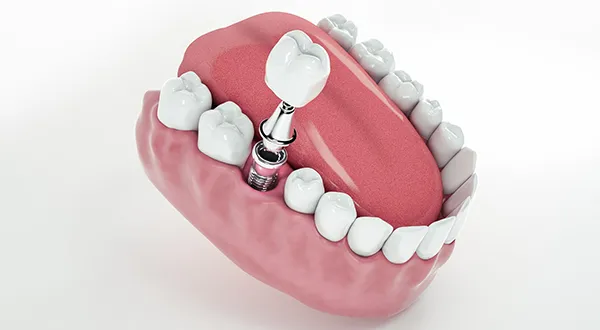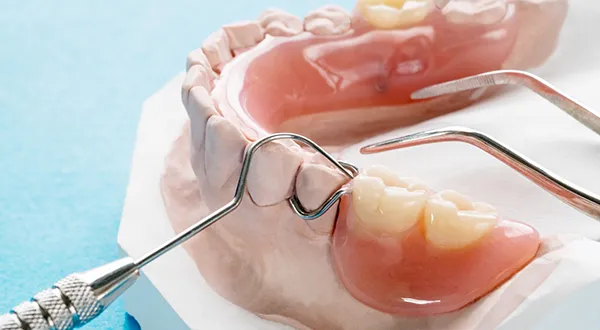When you experience tooth loss, it can significantly impact your ability to smile with confidence. Fortunately, modern dentistry offers a range of solutions to restore your smile and help you regain your self-assurance.
While dental bridges have long been a popular choice for replacing missing teeth, it’s essential to know alternative options to better suit your needs and preferences. By considering these alternatives, you can once again enjoy the ability to eat, speak, and smile with utmost ease.
When it’s better to choose Dental Bridge alternatives?
When considering alternatives to dental bridges, several factors can influence the decision. Here are some key factors to consider when evaluating options:
- Bone health and density: Dental implants might be more appropriate than bridges if you have insufficient bone or gum tissue.
- Longevity and durability: Dental bridges typically have a lifespan of 10-15 years, after which they may require replacement. Dental implants can provide greater longevity and durability, making them a preferred choice for individuals seeking a long-term solution.
- Cost: The cost of treatment can also be a significant factor. Dental bridges are generally more affordable than alternatives like dental implants, which involve a surgical procedure and require additional components. Removable dentures may offer a more cost-effective solution for replacing multiple missing teeth.
- Personal preferences: Some individuals may prefer the convenience of removable dentures, while others may prefer the stability and permanence of dental implants. Considering your personal preferences and lifestyle can help guide the decision-making process.
While the best alternatives to dental bridges may vary depending on individual circumstances, two commonly considered options are dental implants and removable partial dentures. Here’s a brief overview of these alternatives:
Dental Implants: A Long-lasting Solution for Restoring Your Smile
Dental implants are prosthetic devices used to replace missing teeth. They offer a reliable and aesthetically pleasing solution for individuals with missing teeth. Their components, including the implant fixture, abutment, and replacement tooth or crown, work together to create a stable and natural-looking restoration.

Components of Dental Implants:
- Implant Fixture: The implant fixture is a small, screw-like post usually made of titanium. It is surgically placed into the jawbone, acting as an artificial tooth root. This fixture serves as a sturdy foundation for the replacement tooth or crown.
- Abutment: The abutment attaches to the implant fixture and protrudes above the gum line. It serves as a connection point between the implant and the replacement tooth or crown.
- Replacement Tooth or Crown: The replacement tooth or crown resembles a natural tooth in shape, size, and color; it provides a natural-looking result.
The Dental Implant Procedure:
The dental implant procedure typically involves several steps, and the exact process may vary depending on the individual’s specific case. Here is a brief overview:
- Initial Consultation and Examination:
During the initial consultation, a dental professional will evaluate the condition of your teeth, gums, and jawbone. Your dentist may also take X-rays or CT scans to assess bone density and determine the feasibility of dental implants.
- Implant Placement:
While you are under local anesthesia, the dental professional surgically inserts the dental implant fixture into the jawbone. The gum tissue is then stitched back in place, allowing the implant to heal and integrate with the bone through osseointegration. This healing process typically takes a few months.
- Abutment Placement:
After fruitful integration of the implant with the jawbone, a minimally invasive surgical procedure uncovers the upper part of the implant and affixes the abutment. This step allows the gum tissue to heal around the abutment, creating a stable platform for the replacement tooth or crown.
- Placement of Replacement Tooth or Crown:
After the gums have healed, an impression of the abutment and surrounding teeth helps create a custom replacement tooth or crown.
Candidacy for Dental Implants:
- Sufficient Jawbone Density: Adequate jawbone density is necessary to support the dental implant. If the bone density is insufficient, bone grafting or other procedures may be required to augment the bone before implant placement.
- Good Oral Health: Candidates for dental implants should have good oral health, including healthy gums and a minimal risk of gum disease.
- Overall Health and Lifestyle Factors: General health conditions, such as diabetes or immune disorders, may affect the healing process after implant surgery. Additionally, factors like smoking and poor oral hygiene habits can compromise the success of dental implants.
Removable Partial Dentures: A Flexible Alternative to Dental Bridges
Removable partial dentures offer a flexible and cost-effective solution for individuals missing some of their teeth. Their ability to restore appearance, improve chewing and speech, and easily maintain them suit individuals with missing teeth.

Components of Removable Partial Dentures:
- Framework: The framework of a partial denture serves as the base that supports the artificial teeth and connects various components.
- Artificial Teeth: Artificial teeth are custom-made and attached to the partial denture framework to replace the missing teeth.
- Clasps or Connectors: Clasps or connectors help secure the partial denture by attaching it to the remaining natural teeth.
- Denture Base: Typically, dental professionals craft the denture base using a pink-colored acrylic material that seamlessly blends with the natural gum tissue.
- Rests: Rests are small projections or metal tips that provide additional stability and support for the partial denture. They help distribute the forces exerted during biting and chewing.
- Denture Adhesive (Optional): Denture adhesive is a non-toxic, removable adhesive that helps prevent slippage and discomfort, especially during eating and speaking.
The Removable Partial Denture Procedure:
- Consultation and Examination:
The dental professional conducts an initial consultation and examination to assess your oral health comprehensively. This assessment includes evaluating the condition of your gums and bone structure to determine the most suitable approach for partial dentures.
- Impression and Design:
Once the suitability for removable partial dentures is confirmed, the dental team imprints your mouth to create a mold. This mold is the basis for designing a customized denture, ensuring an optimal fit and functionality specific to your needs.
- Denture Fitting and Adjustments:
The dentist schedules a fitting appointment after fabricating the denture. During this appointment, they ensure a comfortable and secure fit of the removable partial denture in your mouth. The dental team makes necessary adjustments to achieve optimal comfort and function.
- Follow-Up Care:
Following the initial placement of the removable partial denture, the dental team schedules routine follow-up appointments to observe your progress and make any required adjustments for continued satisfaction and comfort.
Candidacy for Removable Partial Dentures:
- Adequate Remaining Teeth: Sufficient healthy teeth should remain to support the partial denture. The remaining teeth are anchors for the denture, providing stability and retention.
- Good Oral Health: Candidates for removable partial dentures should have good oral hygiene and healthy gums.
- Personal Preferences and Expectations: Individuals considering removable partial dentures should have realistic expectations and be willing to commit to proper denture maintenance and regular dental visits.
Concluding Thoughts:
When considering dental bridge alternatives, exploring options like dental implants and removable partial dentures is crucial. Dental implants provide a long-lasting, aesthetically pleasing opportunity with remarkable stability and durability. Removable partial dentures offer affordability and flexibility.
Ultimately, the choice depends on individual factors such as oral health, budget, and personal preferences. Consulting with a dental professional is vital to making an informed decision and finding the best alternative for restoring your smile.
Contact your Pinole dentist, Azadeh Hosseini, DDS, or Ghazal Hosseini, DDS, at Top Pinole Dental to learn more about the Dental Bridge Alternatives.
Resource:
The Dental Bridge Procedure: Step-by-Step Guide
*This media/content or any other on this website does not prescribe, recommend, or prevent any treatment or procedure. Therefore, we highly recommend that you get the advice of a qualified dentist or other medical practitioners regarding your specific dental condition.*
1500 Tara Hills Dr., Suite 104A, Pinole, CA 94564
Monday – Saturday 8:00 AM to 5:00 PM
